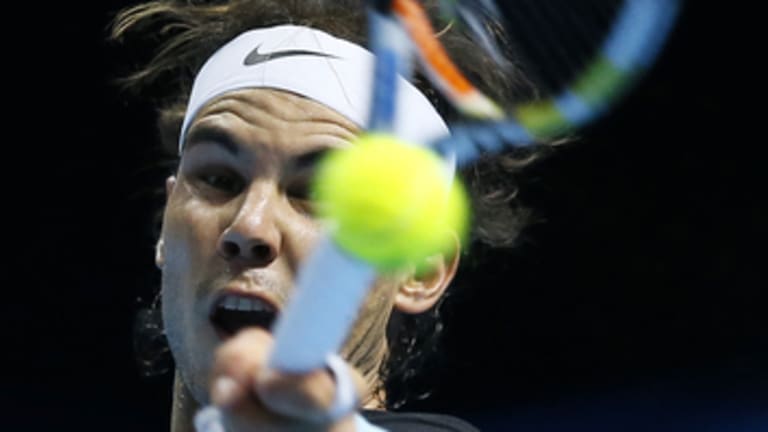“The tactic against Andy is to play very well,” Rafael Nadal said after facing Andy Murray on Wednesday at the ATP's World Tour Finals in London.
Mission—uncomplicated as it was—accomplished. Nadal did just about everything well in beating the world No. 2 by the surprisingly one-sided score of 6-4, 6-1. For the second straight match, Rafa timed his return well, breaking Murray four times. He passed well. He moved into the court and dictated play well. He hit his forehand well.
More impressive, though, was how well he hit two shots that he’s not known for, his volley and his backhand. Nadal was willing to trade ground strokes from his weaker side, and it paid off, and he was 11 of 13 at the net. The only thing that didn’t go so well for him was his serve; Nadal made just 51 percent of them. Fortunately for him, that was still better than Murray’s woeful 43 percent.
“I’m just happy the way that I played today,” Rafa said afterward, “happy the way that I was working. Just another step for me to be able to play at that level, against such a great player.”
Is it a surprise to hear Nadal, a 14-time Slam champ, sound so satisfied to beat a player that he has generally owned over the course of his career? Not these days: Rafa’s win over the world No. 2 was the biggest of his season, as far as his opponent's ranking goes. In their last meeting, in Madrid in May, Murray won easily.
Is it a surprise that with this victory, Nadal has already clinched a spot in the semifinals in London? Well, maybe a little. It may not sound like a major accomplishment for a player with his résumé, but Rafa has never been a lock to make the final four at the tour’s year-end event. Since 2005, he has withdrawn from the WTF four times, gone out in the round-robin phase twice, and compiled a distinctly sub-Nadalian 13-11 record.
